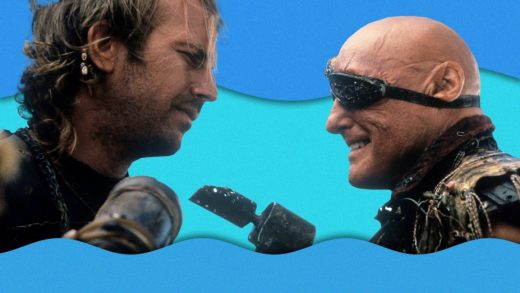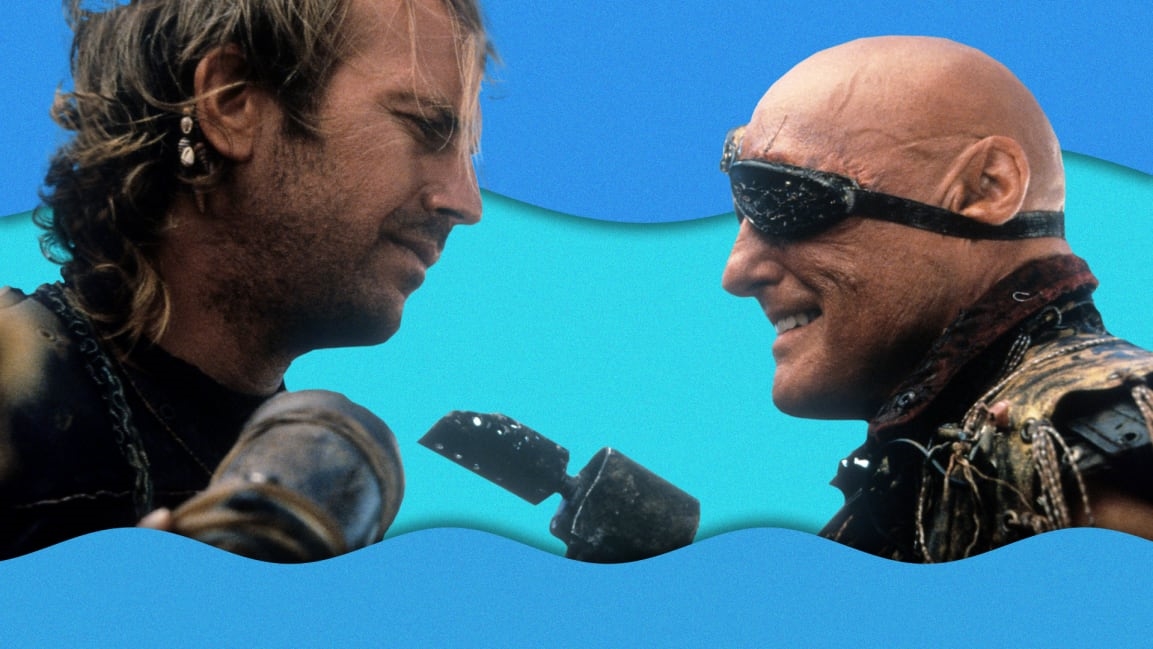25 years ago, ‘Waterworld’ forever changed how we think about hits and flops
The most conspicuous expulsion of water in Waterworld is not the urine Kevin Costner’s gilled warrior guzzles during what is, incredibly, the film’s opening scene. It’s the jaunty, taunting flume he spits directly at Entertainment Weekly readers from the cover of the magazine’s most recent issue prior to release. Instead of a cute rebuke to the tsunami of toxic press swirling around the film throughout every stage of its production—not to mention the literal tsunami that at one point sank its floating set—the image seemed aimed at potential viewers. Costner appeared to be daring them not to go see the movie he had banked his entire reputation on.
It was a dare only too many were willing to take. Just not as many as one might think.
Although Waterworld, which turns 25 on July 28, is often referred to as one of cinema’s most notorious flops, that description isn’t even close to accurate. Not only is Waterworld not a historic flop, it’s not a flop at all.
It is, however, the movie that changed the meaning of what is and isn’t a flop, and in doing so set the stage for a film era where perception is everything.
Not that Waterworld isn’t notorious.
Behind the scenes of a trainwreck-to-be
It’s one of those movies where the story behind the movie is vastly more dramatic and entertaining than the movie itself, and thus superior. Then-unknown costar Jack Black once described the script as “like a wet Road Warrior,” which is more accurate than he may have realized.
The idea for what became Waterworld was conceived in 1986 when schlock-jockey Roger Corman’s production company sought to produce a Mad Max rip-off in its own eminently imitable style. Aspiring young director Peter Rader had a chance to pitch on the project, and decided to distinguish his film from the burgeoning pack of Mad Max rip-offs by setting it on water. Corman’s crew laughed Rader out of the building—why, a film like that would require a budget of at least $5 million!—but he wrote the screenplay anyway.
It was a sci-fi epic with a sociopolitical undercurrent. The film would be set in the year 2500, long after global warming had melted the polar ice caps, turning the whole planet into some kind of . . . Aquaworld, where dry land is but a myth sold by dirt merchants. A mysterious young girl has what may be a map to that mythical dry land tattooed on her back, and a mutated fish-man must guard her from a floating fleet of sea-bikers. High-seas adventure ensues.
Rader sold his screenplay in 1989, at which point it bounced around Hollywood for a few years until Robin Hood: Prince of Thieves duo Kevin Costner and director Kevin Reynolds separately expressed interest. The two creatives, who had a major falling out during postproduction on Prince of Thieves, begrudgingly agreed to re-team, and rounded out their film with the extremely 1995 casting of Basic Instinct‘s Jeanne Tripplehorn, a Speed-resurgent Dennis Hopper, and future Napoleon Dynamite costar Tina Majorino.
In the summer of 1993, a crew of 500-plus people began building Waterworld‘s sets, kicking off what designer Dennis Gassner later called “18 months of hell.”
There is no way to overstate how troubled a production Waterworld ended up, as voraciously reported by the entertainment press. Much has been said about the budget—which started off at $100 million, and topped out at a then-record $175 million—as well as the marathon shooting schedule, which started at 96 days and ballooned to 166. But really, the production encompassed every flavor of the disaster rainbow. Nearly everyone suffered frequent seasickness, or some other malady. At one point, medics were treating 40 or 50 cast and crew members per day. Majorino, only 10 years old at the time, got stung by jellyfish so often that Costner nicknamed her “jellyfish candy.” (He didn’t come up with any cute nicknames, however, for his stunt double, who nearly died from an embolism after surfacing too quickly from a deep-sea dive.)
Hurricane season weather around the Hawaiian location eventually sank a $5 million floating set, while local vendors reportedly price-gouged much of the equipment. Finally, over the course of this horrendous process, Costner endured both a divorce from his wife of 16 years, and a second falling out with director Reynolds, who left the project during the editing stage. By that time, the press had already dubbed the film “Fishtar” and “Kevin’s Gate,” references to earlier bombs, Ishtar and Heaven’s Gate, the latter of which was long thought to have bankrupted an entire movie studio.
Waterworld hadn’t even come out yet, but already a narrative coalesced around its inevitable failure. Schadenfreude consumed the general moviegoing public. Unlike the historic bombs Waterworld was nicknamed after, the film’s slow journey to the big screen was like a public shame-parade. It was the popcorn-worthy event the film itself wanted to be. Everyday folks who didn’t read trade mags like Variety observed the protracted spectacle the way they had O.J.’s white Bronco chase the previous summer. They couldn’t look away from the predestined trainwreck-to-be.
It was at this point, just before the release date, that Costner appeared on the cover of Entertainment Weekly spitting water at anyone who dared doubt his faith in the project.
But Costner seemed to know something that very few others did: Waterworld was no failure.
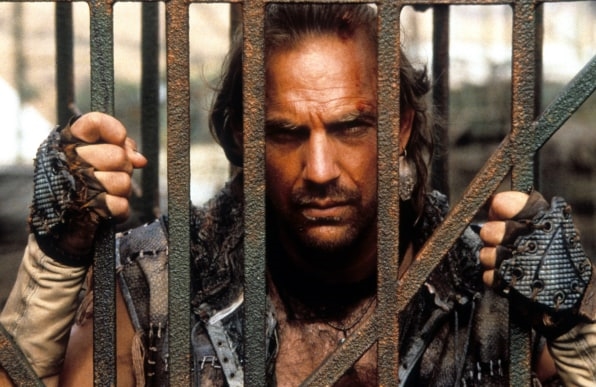
A pretty damn good summer movie but also a joke
The reviews landed on the upper register of “mixed,” with even the positive ones expressing shock. (“Moderately successful,” raved the Los Angeles Times. “Waterworld is a pretty damn good summer movie. There, I’ve said it,” Newsweek confessed.) Watching it now, divorced from the contextual circus of expectations, it’s an ambitious, high-octane romp loaded with impressive stunts involving flaming jet-skis. Every meticulously reported dollar is visible on the screen. Things get a little pompous and meandering at times, but overall: not so bad.
Its box-office haul wasn’t so bad, either.
Although Bill Washington, the head of Universal at the time, estimates that bad publicity wiped at least $50 million from Waterworld’s theatrical take, it still made $88 million in the United States, with a worldwide total gross of $265 million. It’s a disappointing figure, considering the storied budget, but not as disastrous as the rubbernecking public anticipated. Between TV rights, home video sales, and three themed attractions at Universal Studios—all of which are still running in 2020—it eventually even turned a profit.
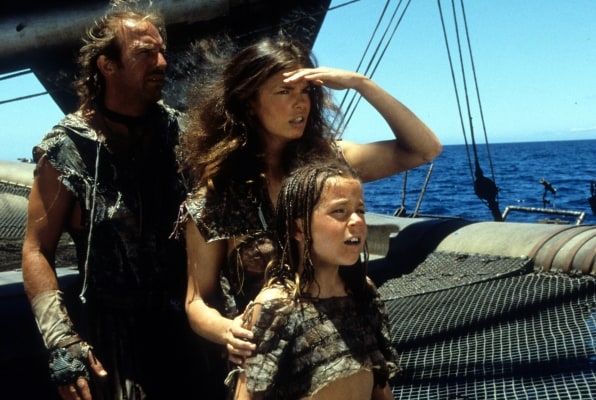
None of that seems to matter. The movie still went down in cinema legend fulfilling its destiny as a hubristic cautionary tale. A year and a half after its release, in January 1997, The Simpsons immortalized Waterworld as a video game that costs 40 quarters to play, and then once the user starts playing, immediately costs another 40 quarters.
Defying reality, Waterworld had stuck the narrative landing and become a joke. Why?
One of the reasons is that the standards for box-office success back then were different. Worldwide gross was expected to boost a movie’s success, not account for it entirely. As media outlets were sharpening their knives before Waterworld’s release, People Magazine scoffed that the movie would have to make $265 million worldwide in order to break even—exactly the amount it ended up making. It was considered almost a cheat at the time, an inflated total.
For better or worse, global box office has now become a critical factor of studio filmmaking in Hollywood. A movie like last year’s Fast & Furious Presents Hobbs & Shaw can bring in $173 million in the U.S. on a $200 million budget and still become a huge hit because its worldwide total is over four times as much as the domestic. (As a side note, adjusted for inflation, Waterworld’s domestic gross would be nearly the same as Hobbs & Shaw‘s.)
The internet effect
More importantly for Waterworld’s reputation, it arrived at the demarcating moment when the world entered the information age.
How much do you remember about 1995? Here’s a primer if you weren’t there. “Creep” by TLC was booming from every Jeep speaker. The first Pixar movie, Toy Story, bowed in theaters, competing with Pierce Brosnan’s first appearance as James Bond, in GoldenEye. On TV, Seinfeld aired its infamous Soup Nazi episode and Drew Barrymore flashed David Letterman. And in the digital world, Javascript was invented, Match.com went live as a free beta offering, the first pro sports game streamed online (the Mariners vs. the Yankees), and Newsweek ran a feature on why the internet would not drastically alter the future.
Of course, the internet was already in the process of drastically altering the future. In 1994, while Waterworld was still in preproduction, the interstellar teleportation saga Stargate became the first movie to have a dedicated promotional website. Casual movie fans were just starting to seek out information online, the first phase of their metamorphosis into armchair box-office analysts. Waterworld was likely the ground floor for many metatextual movie nerds who, two years earlier, might have had to be Entertainment Weekly subscribers to follow the ordeal of Last Action Hero (another famously troubled production).
“Our perception is fueled by the increased availability and accessibility of information on movies,” a group of academics wrote in The Social Science of Cinema. “The web offers weekly and sometimes even daily box-office figures; blockbusters make it to the first page of newspapers; and moviegoers pay attention not only to directors, stars, and awards, but also to box-office results.”
The year after Waterworld underperformed in theaters, Ain’t It Cool News, the Drudge Report of movie blogs, ushered in an era where troubled production scuttlebutt could go viral. (In 1997, AICN founder Harry Knowles posted unflattering, spy-procured set pics from Starship Troopers.) Pretty soon, the comment section of movie blogs became something that could make studio executives sweat.
Waterworld arrived right at the precipice of audiences beginning to play a bigger role in cementing the narrative around a movie’s success?? or failure—and it may have been their first victim.
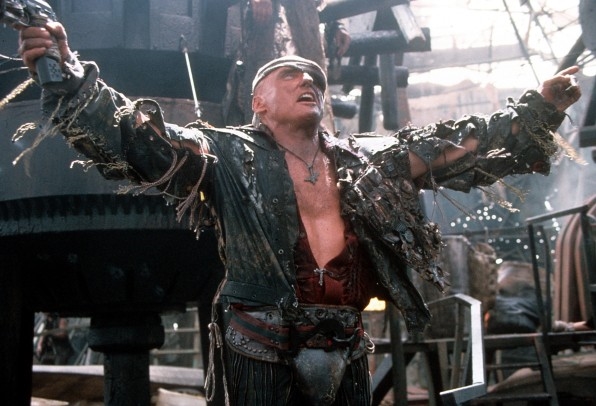
How Titanic was almost Waterworld 2
Not many people remember it now, but Titanic almost followed suit.
During the long, soggy road to Titanic’s release in December of 1997, the film was frequently compared with Waterworld. Both projects involved tons of water. Each saw its budget soar, becoming the most expensive movie ever in its time. Cast and crew injuries plagued both sets. And both became Hollywood gossip-magnets.
Aside from all the surface resemblances to Waterworld, movie insiders seemed to be rooting for Titanic to fail so that it would complete the irresistible narrative of a movie about a famous disaster itself becoming a famous disaster.
James Cameron refused to let that happen.
He was aware of how a powerful meta-narrative of bad buzz could swallow up a movie, and figured out an end run around it. He delayed the release of Titanic from July to December.
“I pitched the concept that the best way to deal with the negative press was to take a step back. To move away from the crescendo of ridicule and let them fall on their face,” Cameron told The Hollywood Reporter a few years ago. “They could only sustain the negative story so long. By December it would have long ago run its course, and they’d have to come up with something new to make ink. That something might just be the fact that the film was actually good, and worth all the drama of production.”
Obviously, Cameron’s plan worked. Titanic went on to become the most successful movie of all time, for a while, and now barely anyone remembers that at one point several members of the crew fell ill from eating chowder spiked with PCP.
Waterworld’s lasting legacy
The narrative around Waterworld, however, came to define that film, full stop, erasing its moderate success from cinema history. The dawning information age then empowered audiences and created an environment where the perception of a film’s success is everything. Justice League, for instance, made well over double its exorbitant $300 million budget in 2017, but let much of it audience down so thoroughly that it will likely always be remembered as an embarrassing flop.
In the next phase of cinema, as more and more films debut on streaming platforms, and box-office numbers less often serve as bellwethers, audience perception stands to became an even bigger factor in defining a film’s success.
Ultimately, though, being saddled with a narrative like Waterworld’s isn’t the worst fate that can befall a film, even if it seems in retrospect like cinematic malpractice. At least the movie has posterity, a memorable legacy.
Kevin Costner’s plodding follow-up, The Postman, simply flopped so hard that nobody remembers it at all.
Fast Company , Read Full Story
(59)

